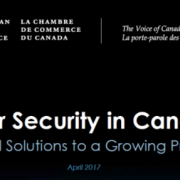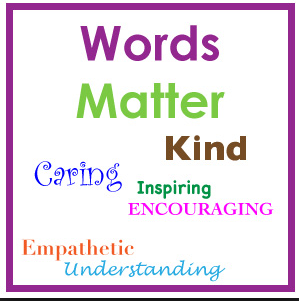Are you ready? Is your company ready? Technology is drastically changing the buyer-seller relationship and your survival could depend on just how proactive your business is. In today’s post, I catch up with Shel Israel, co-author of The Age of Context to get an update on how technology has developed in the year and a half since the book’s release.

Shel Israel
MacLean: First off, what project are you working on now that has you really excited?
Israel: I am working on a book that is intended to serve as a sequel to The Age of Context. In that book, Robert Scoble and I looked at the technologists. In this new book I am looking more at how businesses are using contextual technologies.
The book also examines how this technology is shifting power from the seller to the buyer through social media, reviews and star ratings.
MacLean: In The Age of Context you and Robert Scoble focused on wearable technology or wearable computing. A lot has transpired since then, what is your take on where we are headed? Was Google Glass just ahead of its time? Keeping in mind that Apple just launched their watch.
Israel: In the short time since The Age of Context was published, a great deal has happened. The new era is becoming a reality far faster than I had imagined. In my new book, my attention expands from just those who are making new world-changing technology to those who are adopting it in existing businesses to enhance customer experiences.
This is a new era and there will be a great many experiments. We pioneer the future by trying and failing. One of the grandest and most visionary experiments so far is Google Glass. In itself, Glass was no success. But it has already spawned vertical apps that will endure. For example digital eye-wear is being used in surgery, where a remote expert can help a less experienced local practitioner. Elite auto brands such as Ferrari are using digital eye-wear to let factory experts assist local mechanics worldwide. A blind athlete named Lex Gillette has adapted Google Glass into his artificial eyes so that he can live-stream his races to handicapped children’s classrooms in real time, where kids see precisely what he sees in real time.
There will be more. Issues such as apps, battery, tethering to the phone, will be resolved either by Google or some other company who will owe its success to Google’s spectacularly brilliant first-round failure.
MacLean: It seems to follow that sensor data and sensor technology continues to be growing like crazy. There is so much potential. What is your take on where things are headed in this area? Have there been any surprises for you since the book has come out?
Israel: Robert and I now fold sensors into the larger category of the Internet of Things. This area is experiencing exponential growth. My focus has been in places where customer experience is being enhanced in retail: malls, department stores, stadiums, airports, concert halls, etc.
This is important to merchants. For 20 years online retail has been sucking customers out of stores, and onto web sites. Now, the stores are using contextual technologies to enhance the customer experience at every touch point from, in-store mapping, to personalized text discount offers, to mobile apps that lock-and-unlock dressing room doors, knowing which customer can be allowed access.
The surprise with sensors is not the devices themselves, which are simple little things that notice change and signal the change elsewhere, usually into the cloud. The real action is in the massive adoption we are seeing in proximity platforms such as Beacons, NewAer Proximity Platform and the hopes of Qualcomm LTE Direct which will be released in 2016 where Wi-Fi will replace Bluetooth, thus vastly expanding range and direct communications.
MacLean: Social media and social networking continues to thrive, but there have been some negatives. Do you think that people will begin to pull back a bit from social media, particularly in light of privacy concerns and/or data mining?
Israel: Actually, I see the opposite.
Social media has become a mature platform. Those exciting days when large brands allowed real people to speak as humans from a brand blog or Twitter account has sadly diminished. Social Voices like Scott Monty at Ford, Richard Binhammer at Dell and Frank Eliason at Comcast are no more.
But the amazing phenomenon is that brand marketers have lost their control in social media because they could not learn how to converse as peers with customers. So now people use social media to talk with each other; our friends and previous customers influence much of what we buy, where we eat, what we watch and listen to. Customers do this in social media, on social networks in customer reviews, in star ratings of Uber and Lyft mobile apps. The brands are diminishing in exercising control over influence and message. There is a power shift that is diminishing the brands and elevating the customers. This is fundamental and wonderful in my view.
As for privacy, I have been researching Millennials a lot in recent months for the new book. They are far more concerned about the quality of their experiences, than their personal privacy. They see it more as transaction where they will volunteer personal data in exchange for a better customer experience online or in stores. There are now more Millennials in the marketplace than aging Boomers like me.
Privacy is becoming less of an issue. What is replacing it is a sense of transaction: I will let you know who I am, where I am and what I want. In return for that, you will make my shopping/buying experience easier than ever before. If you want to put offers in front of me, that’s fine, just as long as they are personalized based on what I am interested in.
Marketers need to stop talking and start listening. [Heh, I’ve been saying that for ten years-but I guess they aren’t listening]. People tell marketers everything the need to know voluntarily on social networks already. We announce when are planning a vacation, a night out at a restaurant or for entertainment over a billion times every week on Facebook, Pinterest, Instagram, etc. It is public and there for the culling by any marketer who cares to pay attention or understands how to search unstructured data.
All marketers have to do to make more money and profits and improve customer relationships and acquisition, is to pay attention to what customers are saying online, and in public.
MacLean: Naturally you can’t speak of, or think of, social media and privacy without thinking about location data. Do you think that the concern around privacy might impact app development in this area? Or, are the apps just so cool and useful that people will accept the risk?
Israel: I think the shock and outrage related to personal data is subsiding. I think most people understand what is going on and have decided the upside of what this technology can do is worth the cost-because the apps improve the user/customer experience.
Yes, the apps are so cool. However, users have more choices than ever before, and they will have even more choices for at least the next few years. They will choose the apps and merchants who give them the best experiences for the loss of their personal data. They also will prefer doing business with companies that allow them a few filtering options, as well as the right to correct wrong data and the ability to opt out during private moments.
MacLean: What impact do you think all of this has on business? Are businesses really leveraging technology and data the way they could be, or still in a wait and see mode?
Israel: All this is new stuff in a new age, one in which users have far more control than has previously been possible. For tangible retail, and other customer-facing businesses, this is a new hope. As mentioned we have witnessed online technologies for the last 20 years sucking customers out of the stores. Now with contextual technologies, particularly mobile apps, and proximity platforms such as Beacons, etc. they are modernizing the experiences in malls, stores, stadiums, airplane terminals, and concert halls.
Merchants are using this stuff in new ways, some of it is a bit clumsy, but there are other experiments that show great promise, such as smart mannequins that know when a loyalty program enrollee is interested in an item and wants to try it on. It can signal a clerk who then puts the garment, in the right color and size into a dressing room. The customer then uses a mobile app to unlock the dressing room door and try on the item.
In airports, there will soon be apps that tell shoppers how much time it will take them to get to the gate based on the walking speed that the mobile app is observing.
It’s amazing stuff and it has all just begun.
MacLean: What impact is all of this having on conversations with customers and prospects?
Israel: Contextual technology is now weaving itself into the fabric of the buyer-seller relationship. The data we just discussed, allows the seller to treat all participating customers as individuals, making offers and giving assistance when needed and being unobtrusive when that’s what the customer wants.
What’s also very important here are conversations between customers. We tell each other what and where to buy, travel, eat, watch and listen to. Technology has given customers great power to influence, recommend and warn against brands, and brands have less influence over customer decisions as customers rise in power.
MacLean: How are you using technology differently than you were a year ago?
Israel: In the last year, I have not really changed much. I have my own portable, Wi-Fi and switched back to non-Bluetooth phones. I have probably double the number of mobile apps I am using.
The real issue is that I am using more, much more, technology in more ways. I am using it more with family members and medical service providers. I am paying for more with online checking and starting to make mobile cheque deposits-although I get paid increasingly through electronic systems.
Want to talk more about using technology in your business? Connect with us.











